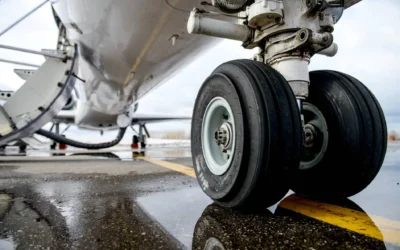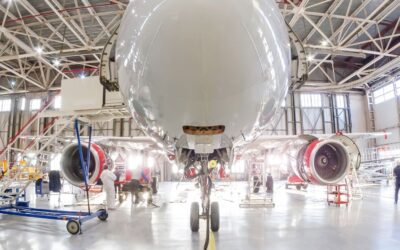Every element of an aircraft’s brake system has a distinct and essential role. The brakes generate friction to bring a speeding aircraft to a halt, relying on strong materials and precise mechanics to perform reliably. Join our experts as we dive deeply into how aircraft wheel brakes are manufactured!
Steps Involved
Each step involved in engineering brakes for aerospace landing gear is crucial. Aircraft wheel brakes must be designed correctly, manufactured with appropriate materials, and contain all the essential components.
The key to ensuring your aerospace brakes are engineered correctly is to work with a company that values quality above all else. NMG has built extensive quality control checks and processes into our aerospace manufacturing operations, ensuring that every component meets our customers’ requirements!
Design of Aircraft Brakes
Aircraft brakes must be designed to operate reliably in all conditions. To ensure an aircraft can land safely, you should use the proper brake system based on the aircraft’s size, weight, and speed. Four types of modern brakes are designed for aircraft landing gear: single disc, dual disc, multiple disc, and segmented rotor.
Single Disc
Single disc brakes are designed for smaller aircraft. They are set between two pads and connected to each main landing gear leg. The disc is set on the wheel, allowing the disc and the wheel to rotate in unison. As brakes are applied, the caliper presses the pads against the disc braking the aircraft.
Dual Disc
A dual disc system is used for aerospace brakes when single disc systems would not create enough braking friction to land safely. In this design, two discs are attached to the wheel and a center carrier is set between them. When the pilot applies the brakes, the center carrier linings make contact with the two discs and the wheel decreases in speed.
Multiple Disc
Multiple disc systems are designed for large, heavy aircraft. They are built on an extended bearing carrier that holds alternating steel stators and discs plated in copper or bronze. The stators are covered in brake lining which is designed to press against the rotors. Hydraulic pressure on the piston compresses this mechanism, which creates friction, slowing the aircraft wheels.
Segmented Rotor
This brake system is a variation of a multiple disc system, but contains modifications and upgrades. In a segmented rotor brake system, the brake rotors are designed with fixed high friction brake linings which make contact with rotors to slow the wheel. The rotors have slots cut into them, allowing any heat to escape. Segmented rotor brake systems are the standard on high-performance aircraft.
Materials
The rotors of disc brakes have historically been made with either iron or steel. However, this presents a problem for heavy aircraft because of the heat produced from high levels of kinetic energy. This causes steel or iron brakes to lose efficiency – something you can’t afford with aircraft brakes. Instead, many designers have begun using carbon fiber on disc brakes. This decreases the weight of the brake system and improves high-heat performance.
Components
There are various components involved when engineering aircraft brakes. Commercial, business, and military aircraft require high-quality, high-functioning brake sleeves, torque tubes, back plates, and discs that are equally reliable in both low-stress and high-intensity situations.
Common Problems With Aircraft Brakes
Understanding how aircraft brakes are engineered is important, as is knowing how to spot and fix a potential problem. Even the highest quality brakes will face wear and tear, needing maintenance occasionally. Below are three common problems that can be quickly handled when caught early.
Overheating
Aircraft brakes face a common issue: overheating. This could be caused by the design of the brakes or by high-braking maneuvers. To solve this problem, you can utilize a segmented rotor brake system and practice braking in a way that generates less heat whenever possible.
Dragging
If you feel a dragging sensation when letting off of the brake pedal, there could be a problem with the return mechanism, a weak return spring, a warped disc, or air in the brake fluid line. A trusted technician can fix any of those problems.
Chattering
Aerospace brakes can get loud, making a chattering or squeaking noise. This happens if the brake lining is not pressed evenly against the disc. A realignment or replacement of parts may be necessary to fix this problem.
Brake Safely Every Time With NMG
NMG’s dedication to exceptional quality management at every step of the manufacturing process results in exceptional brakes that function seamlessly in every operating environment. Let’s talk about how we can support your aircraft brake system!




0 Comments